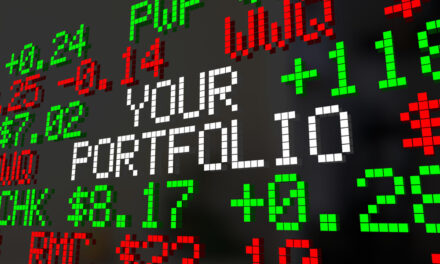The price of gasoline and groceries is near all-time highs. I don’t need to remind you of that.
But you know what else is sitting at all-time highs?
Dividends.
S&P 500 companies paid $140.6 billion in dividends last quarter. For perspective, the figure was $123.4 billion for the same quarter last year.
That’s 14% growth in dividend payouts over the past year — nearly double the rate of inflation!
Again, this isn’t some cherry-picked collection of high-dividend growers. This is the S&P 500, aka “the market.”
Howard Silverblatt, Standard & Poor’s senior index analyst, expects dividend growth in the S&P 500 to be up about 10% for the full-year 2022.
But we need to remember that dividend hikes are never guaranteed.
The Temporary COVID Crunch
Back in 2020, plenty of companies had to cut their dividends to conserve cash during the lockdowns. Between the first and third quarters, S&P 500 dividends declined by about 9%.
By the second half of 2021, those dividends were already at new highs again. And they’ve continued to march higher since.
This shows you how resilient strong dividend payers are. Even the worst pandemic in a century reversed dividend growth for only a few quarters. And remember, most of the companies that enjoyed a pandemic windfall — stocks like Amazon, Netflix and Peloton — don’t pay dividends.
Companies battling some pretty nasty pandemic-related headwinds still managed to pump their dividend payouts higher.
Don’t Just Buy the S&P 500: Be Smart About It
Remember we’re talking about the S&P 500 as a whole.
As income investors, we aren’t going to just buy and hold the S&P 500. It yields a paltry 1.6% at current prices.
Instead, we can build a portfolio of individual dividend payers. These are companies with a good mix of higher current yield and consistent dividend growth.
We just have to be smart about it.
Allocation Matters With Dividend Stocks
I’m A-OK taking a large, undiversified position in a trade I intend to monitor closely. Yes, there is risk, but part of active trading is managing that risk.
When it comes to dividend investing … I don’t watch my positions with the same hypervigilance. The whole point is to enjoy a growing passive income stream.
This is why position sizing is critical.
Here’s my rule of thumb: No stock in a long-term portfolio should make up more than 3% to 5% of your portfolio.
2 Dividend Stock Horror Stories
If you need an example as to why … consider the case of EPR Properties (NYSE: EPR), one of my all-time favorite real estate investment trusts (REITs).
EPR owns a quality portfolio of movie theaters, golf driving ranges and other “experience” properties. The stock is both a perennial high yielder and a high-dividend grower. In early 2020, the stock yielded over 6%.
And then the pandemic hit.
EPR’s tenants shut their businesses down, and the REIT had to eliminate its dividend for over a year. It has since reinstated its divvy payout, but it may be a few years until it reaches prepandemic levels.
Then there’s oil and gas supermajor BP PLC (NYSE: BP), one of the largest and most reliable dividend payers among Big Oil. For most of the 2000s, it sported a dividend yield of 3% to 5%.
Then we had the epic Gulf of Mexico oil spill in 2010 … and BP had to eliminate its dividend. The payout is still well off its prespill levels. Today, BP yields 4.35 pence per share compared to 8.67 pence per share in the fourth quarter of 2009.
If you needed these dividends to pay your bills, you would have been in bad shape.
Bottom line: It’s critical that you:
- Spread your risk across several dividend stocks with strong financials.
- Keep each position no bigger than about 3% to 5%.
The best way to turn a low-risk dividend payer into a high-risk one is to own too much of it.
And be sure to check your Money & Markets Daily tomorrow. Research Analyst Matt Clark and I will go even deeper down the asset allocation rabbit hole in our newest Investing With Charles video. I dug up some old charts that will show you why diversification is so important as the bear market goes on.
To safe profits,
Charles Sizemore, Co-Editor, Green Zone Fortunes
Charles Sizemore is the co-editor of Green Zone Fortunes and specializes in income and retirement topics. He is also a frequent guest on CNBC, Bloomberg and Fox Business.






